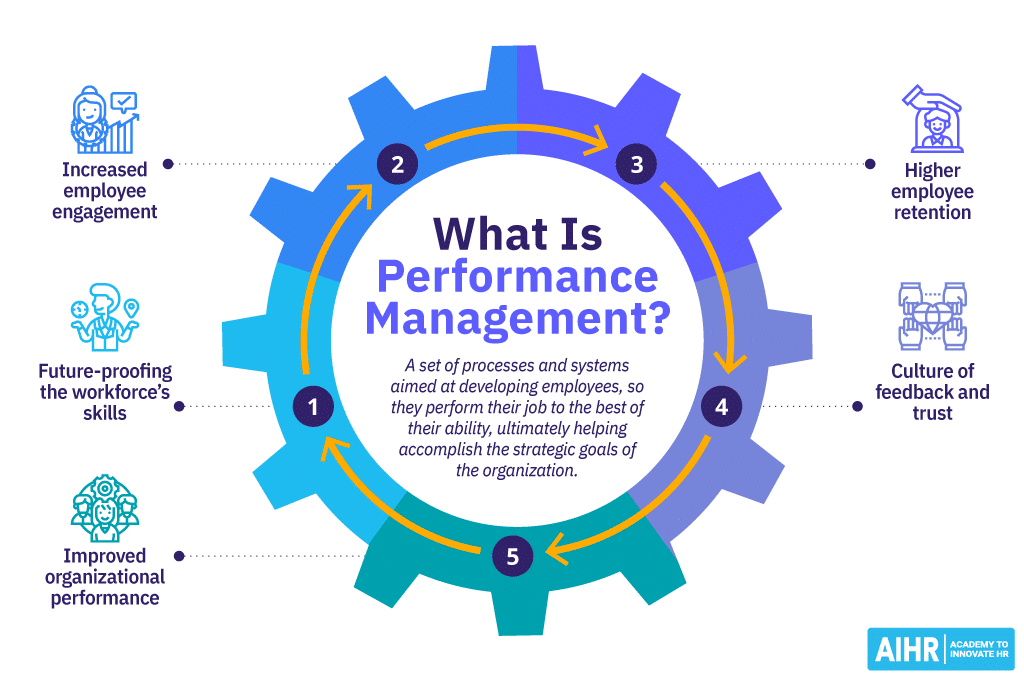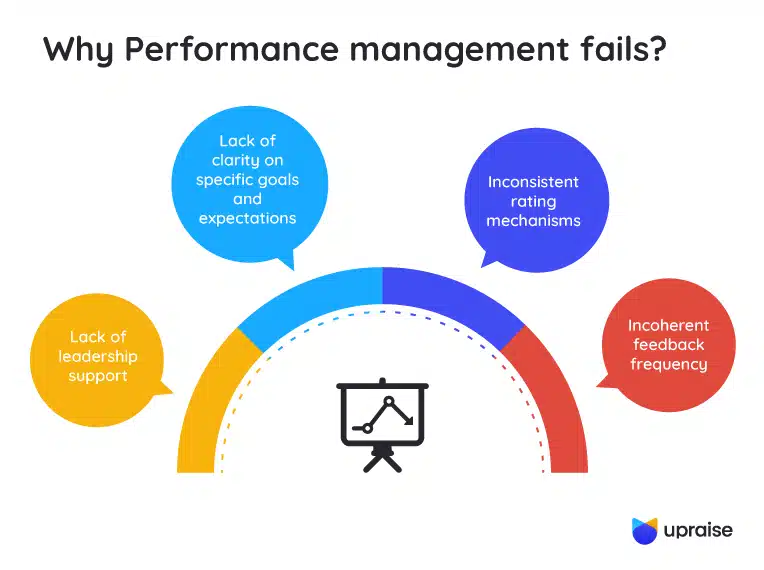Performance management has long been a staple of business operations, designed to gauge employee efficiency and align it with organizational goals. However, traditional methods often focus disproportionately on metrics and accountability, leaving behind the human element of leadership and growth. It’s time for a paradigm shift.
This blog explores how enterprises can rethink performance management by integrating conscious leadership principles. We’ll identify the shortcomings of legacy approaches, highlight emerging trends, and discuss practical strategies to redesign performance culture. By the end, you’ll see how fostering human potential can become your business’s ultimate growth strategy.

Why Traditional Performance Management Falls Short
- Overemphasis on Outcomes, Not Behaviors
Conventional systems prioritize hitting key performance indicators (KPIs) but often neglect the behaviors and mindsets underpinning those results. For example, an employee may meet sales targets but do so through unsustainable tactics or poor collaboration. Without addressing root behaviors, organizations miss opportunities to drive long-term performance and teambuilding.
- Misalignment with Leadership Development
Annual appraisals and manager feedback sessions are typically detached from leadership initiatives, creating a gap between performance reviews and executive coaching. This lack of alignment results in inconsistent development paths for employees, impeding their ability to progress as leaders.
- Lack of Psychological Safety in Feedback
According to research from Harvard Business Review, when employees feel judged rather than supported, feedback systems fail to deliver growth. Traditional reviews often compromise psychological safety, leading to defensive attitudes instead of proactive improvements. Trust and open communication are critical but are frequently missing.

The Rise of Human-Centered Performance Management
- Continuous Feedback Over Annual Appraisals
Modern practices emphasize real-time feedback loops rather than once-a-year reviews. This approach allows organizations to address issues promptly, improving both individual and collective performance. Platforms like Workday and 15Five exemplify how technology is enabling actionable, real-time insights.
- Aligning Performance with Purpose
Employees, especially Millennials and Gen Z, are motivated by purpose, not just paychecks. Integrating personal and organizational goals fosters engagement. For instance, Patagonia ties performance metrics to its environmental mission, strengthening both purpose alignment and employee satisfaction.
- Neuroscience-Based Incentives
The neuroscience of motivation underscores the importance of autonomy, mastery, and purpose. Leaders should cultivate an environment where employees feel empowered to innovate and grow. Gamified achievements and personalized recognition programs have proven effective in motivating teams.

Conscious Leadership’s Role in Transforming Performance
Conscious leaders approach performance management as a partnership rather than a top-down evaluation process. Here’s what distinguishes them:
- From Judge to Growth Partner
Instead of evaluating employees merely for compliance, conscious leaders adopt a coaching mindset. They ask open-ended questions like, “How can I support your growth?” or “What barriers are you encountering?” This transformation encourages ownership and accountability within teams.
- Trust Through Transparency
Trust is a foundational pillar of conscious leadership. Openly communicating about decisions, processes, and expectations reduces skepticism and encourages more honest conversations.
- Fostering Accountability
Accountability should stem from empowerment, not fear. Conscious leaders establish clear responsibilities while creating systems that celebrate contributions rather than punish mistakes.

Integrating the Leadership Circle Profile (LCP) Into Performance Conversations
The Leadership Circle Profile (LCP) offers a groundbreaking way to incorporate self-awareness into leadership development. This data-driven 360° assessment helps leaders and teams identify reactive tendencies (like control and ego-driven behaviors) and unlock creative competencies, such as collaboration and strategic vision.
Designing a Performance Culture, Not Just a Process
To move beyond checklists and spreadsheets, organizations must redefine their approach to performance management. Here’s how to design a truly growth-oriented culture:
- Embed Growth Conversations into Everyday Leadership
Train managers to prioritize ongoing conversations rather than formal, isolated check-ins. Creating “weekly growth moments” facilitates richer, more consistent feedback.
- Metrics That Measure Impact, Not Just Numbers
Standard KPIs often fail to capture the intangible but invaluable contributions of employees. Instead, measure factors like:
- Innovation and problem-solving benchmarks
- Leadership impact assessments
- Encourage Feedback-Rich Environments
Make feedback a two-way street. Employees should feel empowered to evaluate leadership just as leaders assess performance. Introducing non-hierarchical tools like pulse surveys can foster greater inclusivity and ownership.
 Avoiding Common Pitfalls in Modern Performance Management
Avoiding Common Pitfalls in Modern Performance Management
Even with improved systems, certain challenges persist.
- Frequent Check-Ins Without Substance
More meetings don’t automatically mean better outcomes. Ensure every conversation includes actionable insights and a forward-looking developmental focus.
- Overlooking Emotional Intelligence
Many performance systems undervalue softer skills like empathy and emotional intelligence. Yet these abilities are critical for effective leadership and team dynamics.
- Failing to Recognize Systemic Bias
Biases in feedback and opportunities for development disproportionately affect underrepresented groups. Conscious leadership must actively work to identify and eliminate bias, ensuring equitable growth paths for all employees.

Practical Steps to Transform Performance Management
If you’re ready to take action, here’s where to begin:
Start with Leadership Self-Awareness
Utilize tools like the LCP to help leaders understand their own behaviors and tendencies. This self-awareness will set the tone for employee interactions.
Train Managers as Coaches
Equip managers with strategies for providing actionable, empathetic feedback. Leadership Circle offers workshops specifically designed for this purpose.
Replace Ratings With Narratives
Replace restrictive performance ratings with story-driven 360 evaluations. These provide deeper insights and inspire holistic growth.
Experiment With “Growth Sprints”
Introduce quarterly “growth sprints” instead of traditional annual reviews. This innovation will keep employees consistently engaged with their goals.

Moving From Managing Performance to Inspiring It
The future of performance management doesn’t lie in better processes; it lies in better leadership. Conscious leaders who prioritize trust, growth, and purpose will inspire their employees and reap the rewards of a thriving, collaborative workforce. Are you ready to lead the shift?
Bring your leadership to the next level with tools like the Leadership Circle Profile. Explore our assessments, coaching services, and workshops to empower your team and sustain your organization’s success. Contact us for a consultation today!


 Avoiding Common Pitfalls in Modern Performance Management
Avoiding Common Pitfalls in Modern Performance Management


This shift in perspective is so needed! Too often, we focus on short-term metrics that don’t capture the full picture. Conscious leadership could be the key to building a sustainable and people-first culture that truly drives long-term success.
So, we’re finally ditching the dusty checklists and embracing growth, huh? I mean, it’s about time we start treating employees like humans and not just numbers on a spreadsheet! 🎉
Your blog is a constant source of inspiration for me. Your passion for your subject matter shines through in every post, and it’s clear that you genuinely care about making a positive impact on your readers.